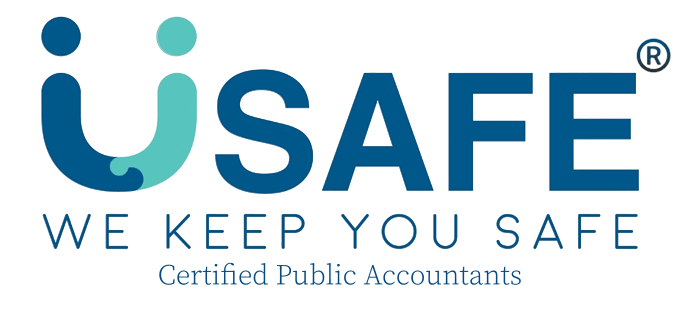IAS 36 Impairment of Assets – Ensuring Assets Are Not Overstated
1️⃣ Introduction: Understanding IAS 36 Impairment of Assets
IAS 36 Impairment of Assets sets out procedures to ensure assets are carried at no more than their recoverable amount – the higher of fair value less costs of disposal and value in use.
In Singapore, where transparency and fair presentation are essential, IAS 36 Impairment of Assets helps firms prevent overstated asset values and ensures financial statements reflect true economic conditions.
This standard applies across property, equipment, goodwill, and investments accounted for under IAS 28 Investments in Associates and Joint Ventures.
2️⃣ Purpose and Scope
IAS 36 applies to most tangible and intangible assets, except those covered by other standards such as IAS 2 Inventories, IAS 12 Income Taxes, or IAS 19 Employee Benefits.
Its purpose is to make sure companies recognise an impairment loss whenever the carrying amount of an asset exceeds its recoverable amount.
The standard requires management to:
-
Identify possible impairment indicators.
-
Estimate recoverable amount.
-
Recognise and disclose impairment losses promptly.
3️⃣ Identifying Impairment Indicators
Entities must review assets for impairment indicators at each reporting date.
Common internal and external indicators include:
-
Market declines in asset value.
-
Adverse changes in technology, markets, or regulations.
-
Physical damage or obsolescence.
-
Cash-flow declines or continuing operating losses.
-
Significant changes in interest rates or discount rates.
When these signals appear, an impairment test must be performed without delay.
4️⃣ Recoverable Amount: Fair Value vs Value in Use
IAS 36 Impairment of Assets defines recoverable amount as the higher of:
-
Fair value less costs of disposal (FVLCD) – the price obtainable in an arm’s-length sale minus selling costs.
-
Value in use (VIU) – the present value of future cash flows expected from the asset or cash-generating unit (CGU).
Discount rates should reflect current market assessments of time value of money and specific asset risks.
5️⃣ Cash-Generating Units (CGU)
When individual asset recoverability cannot be measured, entities test at the CGU level – the smallest identifiable group of assets generating independent cash inflows.
For example, an accounting firm’s cloud-system software may not produce cash inflows alone, so the CGU could include the firm’s entire digital-service division.
6️⃣ Goodwill and Annual Impairment Testing
IAS 36 requires annual impairment tests for:
-
Goodwill acquired in business combinations.
-
Intangible assets with indefinite useful lives.
Goodwill is allocated to CGUs or groups of CGUs benefiting from the acquisition. The impairment loss is recognised if the recoverable amount falls below carrying value. Once recognised, goodwill impairment cannot be reversed.
7️⃣ Recognising and Reversing Impairment Losses
-
Recognition: Record the impairment loss immediately in profit or loss.
-
Reversal: If circumstances change and recoverable amount increases, reverse part or all of the loss (except for goodwill).
Reversals are recognised only to the extent that the new carrying amount does not exceed what would have been recorded without prior impairment.
This approach ensures consistency and prevents artificial profit boosting.
8️⃣ Disclosure Requirements
IAS 36 Impairment of Assets requires disclosure of:
-
Events and indicators that triggered the impairment test.
-
Amount of impairment losses and reversals.
-
CGUs tested and methods used to estimate recoverable amount.
-
Key assumptions – growth rates, discount rates, terminal-value formulas.
For Singapore firms, ACRA’s FRSP often reviews goodwill and CGU disclosures closely, especially where material assumptions drive reported valuations.
9️⃣ Common Errors
Many preparers still apply IAS 36 incorrectly. Typical mistakes include:
-
Performing impairment tests only after the audit, instead of at reporting date.
-
Using outdated discount rates or unsupported growth assumptions.
-
Grouping unrelated assets into one CGU.
-
Omitting required disclosure of key sensitivities.
Therefore, avoiding these errors helps firms safeguard compliance and maintain investor confidence.
🔟 Common Errors
-
Performing impairment tests only after external audit instead of at reporting date.
-
Using outdated discount rates or unverified growth assumptions.
-
Grouping unrelated assets into one CGU.
-
Omitting disclosure of key sensitivities.
Thus, avoiding these errors safeguards both compliance and investor confidence.
11️⃣ Best Practices
To strengthen implementation and reduce audit adjustments:
✅ Develop an impairment-testing calendar aligned with budget and audit timetables.
✅ Use market-based discount rates and verify assumptions with external data.
✅ Maintain complete documentation of cash-flow forecasts and valuation models.
✅ Disclose key assumptions clearly, so reviewers understand management’s rationale.
As a result, these steps help firms apply IAS 36 Impairment of Assets effectively and defend valuations during review.
Conclusion
IAS 36 Impairment of Assets ensures financial statements reflect only recoverable asset values, preventing overstatement.
In addition, it promotes disciplined assessment of goodwill and long-lived assets.
Therefore, for Singapore companies, strict adherence to IAS 36 Impairment of Assets enhances accuracy, credibility, and investor trust, aligning with ACRA’s requirements and international best practices.
Disclaimer: This article is for informational purposes only and does not constitute any professional advice. Feel free to contact us to consult with our professional advisors team for personalized advice and guidance.
Sources: https://www.ifrs.org/issued-standards/list-of-standards/ias-36-impairment-of-assets/




